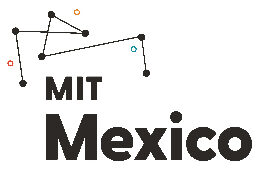Which do you think would be the better English language lesson, an airtight grammatical lesson about the Present Perfect or a lesson that develops real life skills that society has gaps in? The annoying answer is of course, both. There is a time and place for both types of lessons in a well-planned curriculum, but I believe that education (generally speaking) is neglecting one of these slightly.
How the world works is constantly changing but we have seen for a while now that one area is repeatedly being projected to have a shortage of occupations filled. This area is Science Technology Engineering and Mathematic (STEM) related jobs. Recent projections have stated that the US has millions of unfilled STEM jobs and has predicted that by 2025, the country will require 3.5 million STEM related jobs. That is a huge gap.
Recent projections have stated that the US has millions of unfilled STEM jobs and has predicted that by 2025, the country will require 3.5 million STEM related jobs. That is a huge gap.
Therefore, as educators, both teachers and parents have an obligation to immerse our students in these types of skills and ways of thinking. This is where STEM activities can fill the void, like the millions of jobs.
What is STEM?
To put it very simply, STEM is an interdisciplinary approach to teaching that integrates four disciplines, Science, Technology, Engineering and Mathematics, together in a real-life challenge or problem.
STEM is a blended learning technique which gives students the opportunity to apply the four disciplines in real life situations instead of from books and equations.
Students need to look at a problem that is given to them, think about how to solve it, then research different methods to resolve the problem. Through planning and execution, the student can reflect if they succeeded in the challenge or could improve their approach – and ultimately do it again. Here is a typical framework for a STEM activity:
| Stage | Activity |
| 1 | Present challenge |
| 2 | Research the problem to search for solutions |
| 3 | Draw a diagram of the model, process or system |
| 4 | Construct a prototype |
| 5 | Test the prototype |
| 6 | Evaluate the performance of the prototype |
| 7 | Identify how to improve the design of the prototype |
| 8 | Make any necessary changes |
| 9 | Retest and re-evaluate the prototype |
What does a typical challenge look like?
Here at Colegio Merici we have completed a few of these challenges with our fifth graders and I was welcomed by amazing enthusiasm, determination and demonstration of different types of skills that aren’t often seen in ‘regular classes’. The challenge was simple: create the highest free-standing structure using only spaghetti, tape, and plasticine.
The beauty but often downfall of STEM challenges is that students are very excited about the activity and rush straight into it. If we allow ourselves to do this, the whole learning and developmental processes are lost.
This is an example ‘worksheet’ from one of our students. You can see clearly that each stage has been carefully considered and planned, to accomplish the best results.

By providing students with a worksheet (even as simple as drawing on white paper) we give the children purpose and motivation to think through every part of the challenge carefully, and therefore trigger design thinking into their work.
In our example, first students were presented with the objective of the lesson and asked to write it down correctly. This is crucial as students often forget key details, like standing unassisted in our case. By making sure they have the objective in writing, we can inspire independence as we encourage them to go back and check the criteria. Next, I told the students what materials they needed and the maximum allowance for each material. This is important as it provides the challenge to students and gives structure to the task. Unlimited time and resources often lead to fading interest and distraction.
After students select a specific role within a team for each student, we proceed to the fun stuff. Students are given a time limit (around ten minutes) to use iPads and research strong structures and shapes. This will be the base of their construction, but they also aren’t forced to follow the plan strictly. Like in everyday life, if something isn’t working how you expect, you should probably make a change.
Now we have reached the moment where the class is bubbling with impatience and excitement. Students are ready to construct their almighty structures and embarrass Egyptian Pharaohs long past. The last thing that is left to do is instruct the class to carefully collect their materials, being mindful of the tasks’ restrictions, and start the challenge. Remember there is a time limit that they must follow, although an extra minute or two won’t hurt.
STEM is a blended learning technique which gives students the opportunity to apply Science, Technology, Engineering and Mathematics in real life situations instead of from books and equations.
During the construction stage, teamwork and collaboration is vital. Observations and encouragement may sometimes be necessary to ensure it happens. Remember that this is a student led activity and if they adapt their masterpieces during construction, it is absolutely what we want. That is where the learning is taking shape. They are thinking critically about the task and demonstrating problem solving skills and creativity to solve issues that arise. Take a step back and enjoy the show, while also keeping them on task, congratulating ideas and collaboration and most likely reminding them of their objective and that the tower needs to be standing unassisted.
The activity has finally drawn to a conclusion and there are little pieces of spaghetti and tape all over the floor. Once again, it is the responsibility of the class to clean up their workspace and move their structures carefully over to the Teacher’s desk. Students look at their model, plan and success of the task and reflect carefully on their performance during the activity. Ask the students what changes they would make to their process and construction and have them write it down in their designated area on the worksheet. Students will often think of ideas and methods on how to be better at succeeding in this challenge, and this is when you can surprise them with “you have ten more minutes to make your changes”.
By allowing students to have another attempt they are demonstrating their learning and development, but it also gives meaning to future reflection tasks, as they are aware that these are not empty promises.
How are Science, Technology, Engineering and Mathematics used in my example?
So in this example of the Spaghetti Tower Challenge we can look at how the four areas are included and implemented in their process and way of thinking. They are applying scientific principles by predicting the outcomes of their structures and experimenting on these predictions. They also question certain strategies and observe results on their first spaghetti structure. Technology can be demonstrated in the method in which they search and collect information about strong structures, for example skyscrapers and bomb shelters, using various tools. However, it is also in the fact that they are making things happen within the project by turning designs into structures.

Engineering is quite clear to see in the topic however it is in the process that I will highlight. Students are presented with a problem and need design thinking strategies to find solutions to implement into their structures. They then proceed to create new prototypes in their project following their results and experiments. Finally is Mathematics, by observing patterns in their results students were able to redefine their structures by measuring their pieces of spaghetti and deduce that shorter lengths were stronger for towers. They also experimented with different shapes for structural support depending on their strength.
What are the benefits of STEM?
During these activities the responsibility for learning is placed on the shoulders of the students. The role of the teacher (or parent) is to guide and assist the students in the problem-solving process. A collaborative learning environment in the science classroom has many benefits, including:
- Engaging students in active learning
- Encouraging students to communicate openly
- Motivating students to cooperate and support each other
- Teaching respect for contributions of all members, and
- Preparing students for the real world
Also as Colegio Merici is a Project-based learning school, we are exposing them to various characteristics which are fundamental to this method of learning. These are:
- Research: Students find out what is already known about the topic being investigated
- Collaborate: Students complete activities in their groups together. They are encouraged to communicate openly, support each other, and respect contributions of members as they put together perspectives and experiences toward solving a problem
- Design: Students use creativity and imagination to design an object, process, model, or system. Students test the design, record data, and analyse and interpret results
- Reflect: Students think back on the process in a way that further promotes higher-order thinking

How can I introduce this at home?
I believe that STEM activities are so interesting and engaging for students that they can be implemented at home during those occasional holiday days while bored or as part of a fun family bonding activity during the weekend. As I have delivered the ‘Spaghetti Tower’ challenge to various ages between nine and sixty years old, this would be applicable for all ages above fourth grade as these ages have both the excitement and critical thinking skills necessary to make these activities a success.
However, it is not only for students above the age of nine, in the past I have also had the delight to teach STEM to students as young as four years old. In order to accomplish STEM with younger ages, we need to do the following:
- Adjust our expectations: as younger students also have a lower ability to critically think and analyse, we should not expect them to produce spectacular results – but that doesn’t mean we shouldn’t try it.
- Change the research stage: as research may be too challenging for younger children, we can simplify it. Instead of asking them to research, they can put stickers on drawings that they believe will be the best design
- Eliminate writing: keeping the activities to photos and visuals will assist the students with the motor skills they may not possess. They can often express themselves and their plans using drawings.
- Select the challenge carefully: we should aim to give the correct level of challenge that is within their abilities. For example, design a bridge over a paper river using different materials (blocks, plasticine, paper, etc) or make a chair for certain sized toys using different materials too.
Given these points which I have written about, I think we have excellent opportunities both as family members and teachers to develop skills that are crucial to twenty first century children. It isn’t necessary to be an expert in STEM to present and support children with different activities to reach these skills, the only tool you require is optimism. For readymade challenges to use, see the links below. It is not the destination, but the journey.








